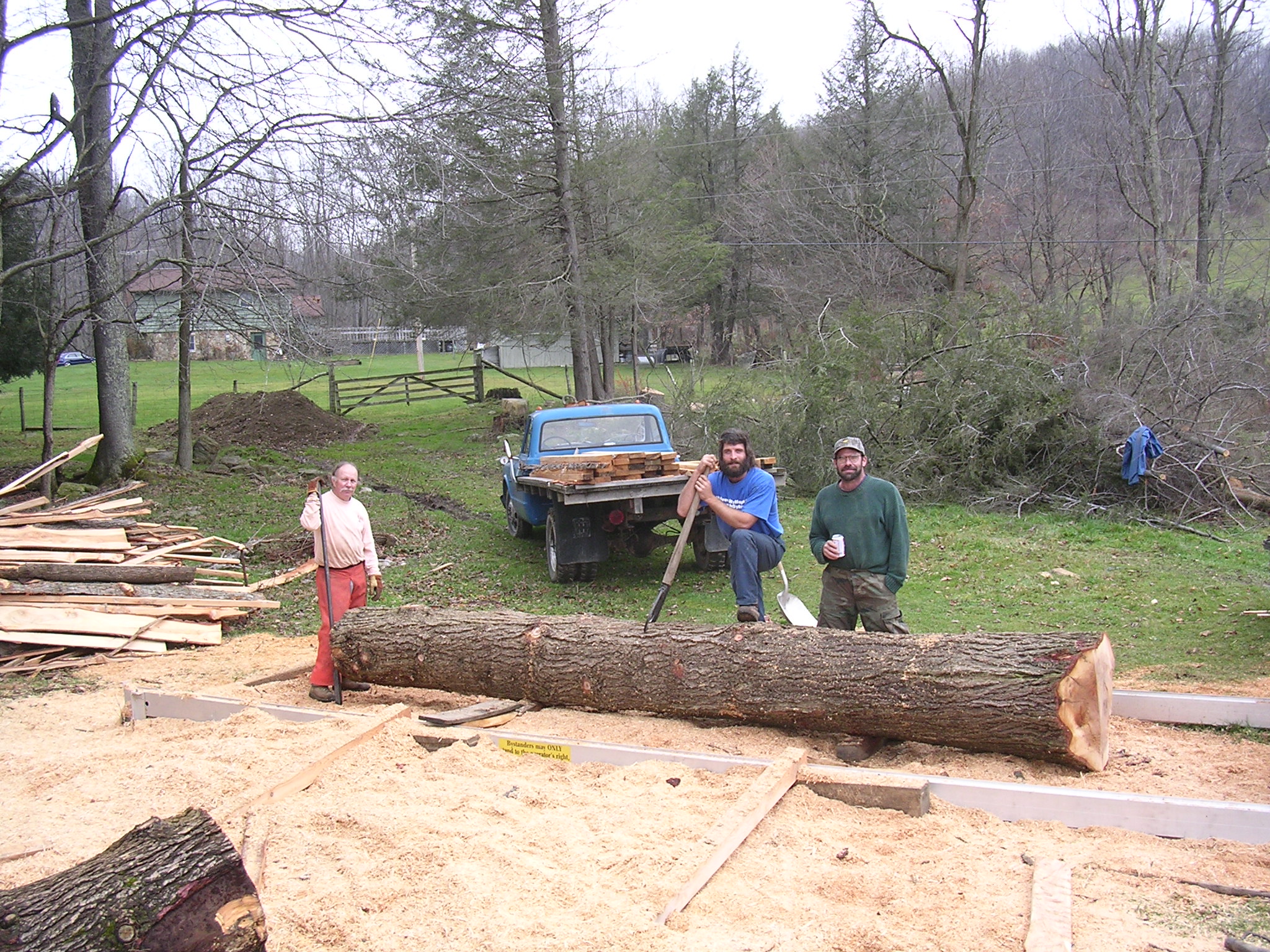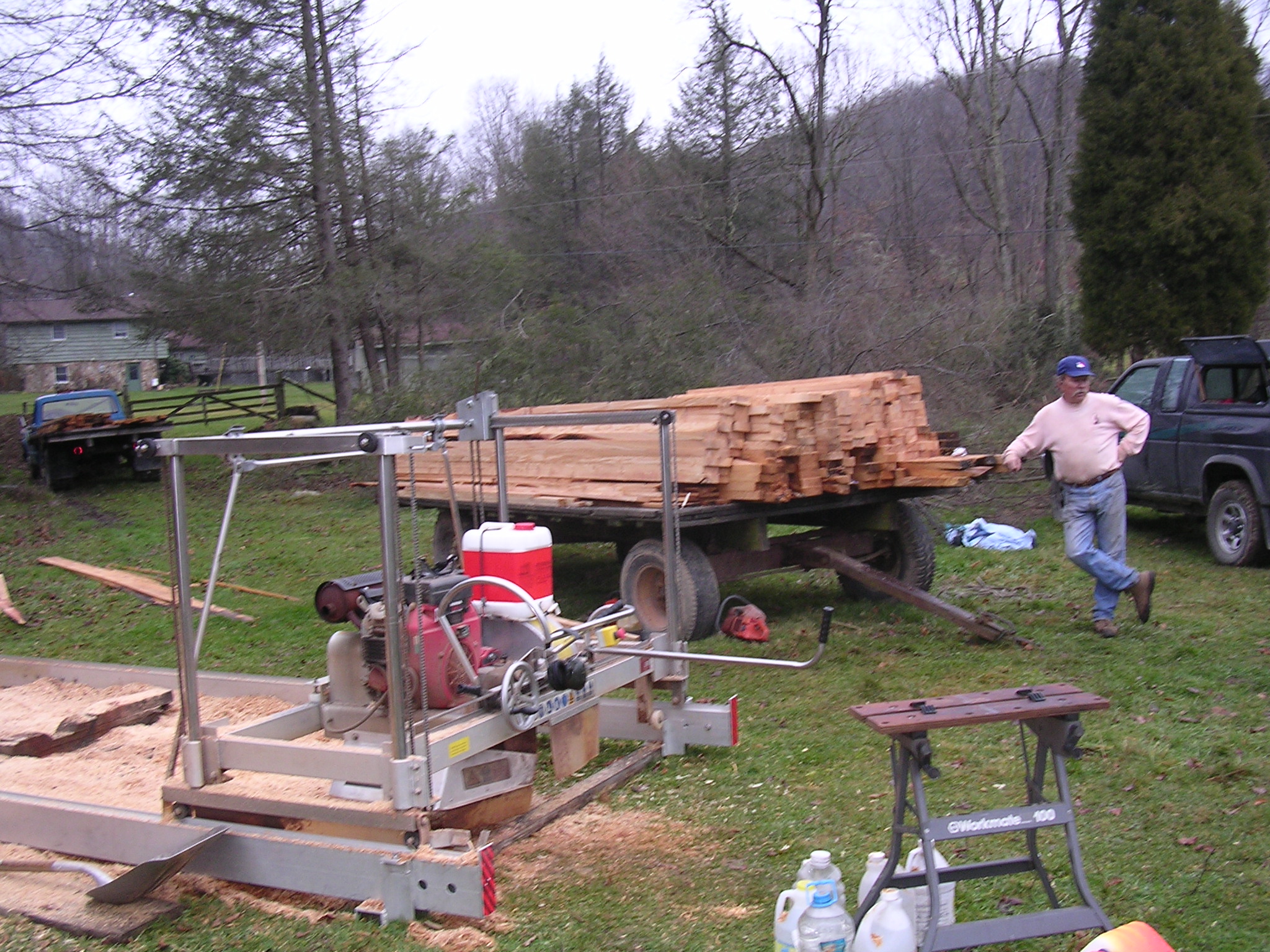Jim Bourne knows wood. Give him a giant log or a hunk of wood and he will help you turn it into almost anything. He has cut wood for log cabins, retaining walls, horse fences and even his own barn.
Now that Bourne has a Peterson Sawmill, his wood obsession is growing.
Bourne, an Owings cattle farmer, hosted a group of ragtag hobbyists, woodworkers and entrepreneurs, who were looking to break into the sawmill business with the newest technology at his home last Friday and Saturday.

The sawmill tech-heads came from West Virginia, New York and Massachusetts for a day of wood-shredding, board-making, rotary blade-spinning fun – all of which was under the careful tutelage of Peterson wood expert, Andy Myrick.
Myrick, Peterson’s wood specialist from Vermont, brought the sawmill purchasers from all over the East Coast onto Bourne’s cattle farm to learn how to use their sawmills, he said.
They would save thousands of dollars in shipping charges, and then be shuttled off to their locales to start their own milling endeavours, spreading the already-popular demand for Peterson Sawmills in the U.S., he said. Before arriving in the country, Peterson Sawmills were assembled in New Zealand – the new hotbed for sawmill technology.
“Some of these guys are just hobbyists,” Myrick said, pointing to a New York man learning to disassemble his mill for traveling. “(The purchasers are) a lot of woodworkers and they see a lot of wasted logs. He’s just a hobbyist. He gets a log once in a while and likes to cut it into lumber.”
Bourne, an eight-year veteran in the custom sawing business, walked the length of his dirt driveway staring at his field, which within hours, had turned into Mother Nature’s graveyard. Peterson’s newest customers had conquered his farm. Several logs with 90-degree chunks beveled into their sides lay on muddy ground, ready to be finished off into boards.
“It’s all about economy”, Bourne said.
“Sometimes, when someone builds a house, their contractor has left a pile of logs behind their house,” he said. “They can let them rot or have someone like me come turn it into fine wood. There’s an awful lot of lumber that gets ruined. People don’t know a service like this exists.”
The sawmill will fill in dry spots during the winter, when farming income is scant, Bourne said. He hopes the mill – for which he paid $12,000 – will pay itself off.
“The mill is very ingenious,” he said. “Every once in a while I would run past a big, high-dollar log” which was too big. “Now, we can handle logs up to 60 inches in diameter.”

Jeff Sincell, of Springfield, WV, is an electrical engineer who works on space shuttles. He drove to Owings with family and friends to pick up his mill and take it home to his farm where he plans to learn the logging business ropes for a year and then saw timber commercially.
Myrick had been demonstrating the proper use of the mill, but let Sincell try it out for himself after everyone was comfortable with the machine.
After both parties finished blurting out estimates over how many inches they wanted to cut their timber out of a massive log lying in the ground, Sincell apprehensively took his spot behind the sawmill.
He switched on the motor and began to slide the machine along its track toward the log.
“That’s going to be one hell of a piece of wood,” Sincell said, yelling over the hum of the rotary blade.
As the blade bore into the log, the sound was almost menacing as the machine sent shards of wood into the air. As Sincell brought the blade to the end of the track he swing it into its vertical position and dragged the machine into reverse. Sliver after sliver of timber piled on the ground next to the sawmill as onlookers grabbed the felled timber from Sincell’s path.
“Well, it sure does make lumber, yes it does,” Sincell said with a coy grin on his face after successfully manning the mill. ”I’m in the space craft business . . . and this machine is as well built as any space craft.”
The Peterson Sawmill spits in the face of past lumber technology, Myrick said, featuring a rotary blade, which runs on a track that can horizontally cut the face of the widest and longest of logs, flip to vertical position and reverse, splitting the log into precise, smooth slivers. Peterson manuals claim the mill can take on logs of any size and can be driven to areas inaccessible for most sawmills.
“It’s an expensive piece of eqipment, and it’s not something you want to learn with a video,” he said.

As the sun set on Bourne’s farm Friday evening, Myrick began setting up for the next day’s demonstrations, which promptly began at 8am. Sincell and his friends packed their mill in anticipation of prosperous milling years to come. Three sawmills were sold in Calvert County on December 27, but hopefully those numbers will gradually increase as people see Peterson’s new customers at work, Myrick said.
After the purchase of his new timber-making machine Bourne proclaimed his versatility in another agricultural genre.
“I like to describe myself as a farmer with a sawmill,” he said. “It breaks down and I can go anywhere with it.”
Pat Mulligan, 46, of East Hampton, NY, looked forward to using his own wood in his carpentry business on Long Island, NT.
“This is great because it makes it easy for people to utilize their wood,” he said. “It’s a whole different ball game of doing business.”
